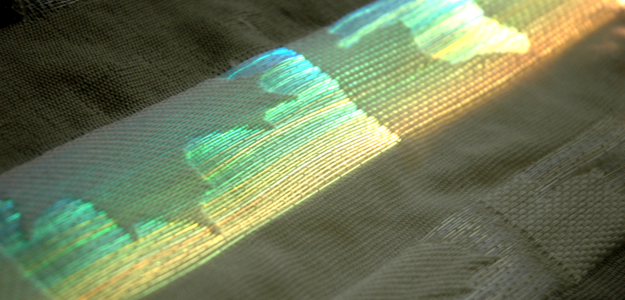 Fashion is something that goes beyond simply looking good, but more with how you present yourself to the world, and how that world responds to you in a social and cultural context. In many ways, what we wear defines us. But with such power and definition comes the opportunity to reinvent ourselves with new looks and new clothes. Being able to change clothes allows us to become chameleons, in a way. So what if we didn’t have to change clothes to change our appearance so dramatically?
Fashion is something that goes beyond simply looking good, but more with how you present yourself to the world, and how that world responds to you in a social and cultural context. In many ways, what we wear defines us. But with such power and definition comes the opportunity to reinvent ourselves with new looks and new clothes. Being able to change clothes allows us to become chameleons, in a way. So what if we didn’t have to change clothes to change our appearance so dramatically?
Karma Chameleon is the wonderfully retro name given to a project currently being carried out by a group of researchers at Concordia University in Montreal, Canada. The team is investigating ways to weave electronic fabric into clothes to allow the clothes to become “smart garments” – clothes that could change the way they look.
“We propose to develop a collection of interactive electronic garments constructed out of a new generation of composite fibers that are able to harness power directly from the human body, store that energy, and then use it to change their own visual properties,” the team explains on its website. “These animated garments will change color and illuminate on the body in response to physical movement.”
The theoretical clothes wouldn’t need to be plugged in at night to charge, like current personal devices; instead, they’d take their energy from the wearer. “Parasitic power involves harnessing energy directly from the body or generating power by the user to alleviate design restrictions and enable new functionality,” the team explains, pointing out that because society’s power consumption is “constantly increasing, particularly in the design of mobile and wearable electronic devices [they] need to consider the development of energy sources that are independent from our power grids and reside on the body.”
At first, the plans to make a garment that changes appearance are starting relatively small; instead of aiming to create something that will completely change dependent on the wearer’s mood or taste, the changes will be limited to illumination and color that responds to the wearer’s movement and the power that is produced as a result. Of course, once that is achieved, the sky may be the limit – if you’re willing to wait long enough.
“We won’t see such garments in stores for another 20 or 30 years, but the practical and creative possibilities are exciting,” said Professor Joanna Berzowska, of Concordia University’s Department of Design and Computation Arts. “Our goal is to create garments that can transform in complex and surprising ways – far beyond reversible jackets, or shirts that change color in response to heat.” In the future, when someone says you look hot in an outfit, then, it must just take a literal meaning.


